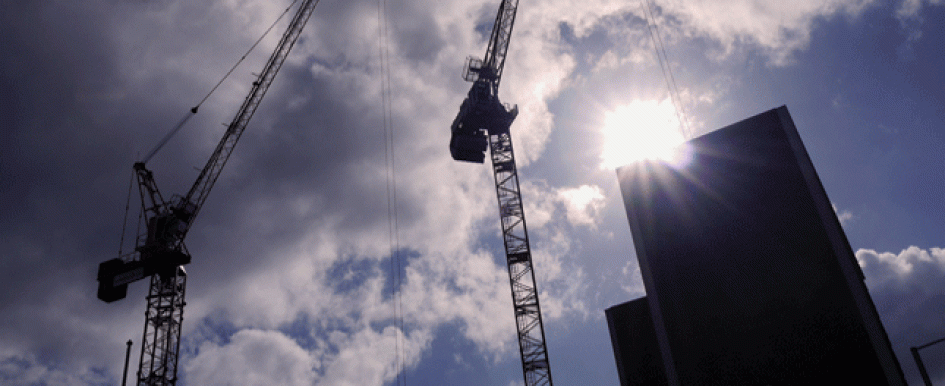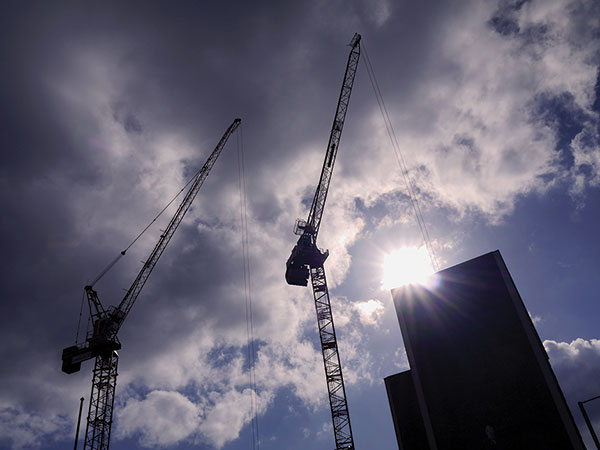
Today’s geopolitical headlines are enough to cause a contractor to throw his or her hands up, cash in, close the doors and move to another country. But, you’d be hard-pressed to find another country in any better shape. So, we press on, looking for better days and making the most of national and global affairs. The only way the economy will improve is to move forward and work through the challenges. Although the value of construction put in place has not exceeded 2006 highs, we expect it to reach $977.1 billion in 2014. The only way to explain what is happening now compared to pre-2006 is that this is the “new normal,” which means businesses must learn to cope with slow industry growth as opposed to the rapid growth of the past. It also means areas of growth, such as shale oil regions and data centers, will continue to pop up.
Because of the uncertainty in the industry, the investor must learn to manage risk and sharpen his or her analysis with more research and new ideas in order to keep up in an ever-changing industry. We don’t know all the causes for fluctuations in the economy, but one thing is sure: Like the weather, the economy will change as soon as we make our forecast.

As the construction industry looks ahead to 2014, we can say that the view is not too bad from here. It’s a sunny day over most of the nation with hardly a cloud on the horizon for most markets in the construction industry. The sun shines brightest in the direction of residential construction, the only sector we see growing in double digit percentages. While nowhere do we see a hot spot for construction growth, we expect most areas to grow slightly ahead of GDP growth. However, some foggy areas persist, especially in those markets dependent on infrastructure growth. Commercial construction is waiting on consumers who are still working their way out of debt or trying to find good-paying jobs. The job market is improving but is still unstable in most parts of the country, unless a job seeker is prepared to move to a shale oil boomtown.
To continue our meteorological metaphor, weather forecasting is complex, and the satellites that scan the globe show that “weather” is out there. Our sunny day could be in jeopardy as we look at global news feeds. We’ve seen headlines about the U.S. sending warships toward the Middle East to deal with chemical attacks in Syria. We find that we have reached a nuclear arms deal with Iran, and who knows what that will mean for the economy or to our enemies and allies around the globe? Then—you can almost feel it in the air—another storm looms larger on the horizon: Congress and the president will go at it again over the debt crisis to hopefully fix the budget. Syria, Iran and budget battles continue, and each will continue to affect economic decisions and public and international policy. Factoring in complex global issues as they might affect construction is difficult, so this forecast attempts to separate these factors. One exception might be the effect of government spending on construction, which shrank at about 4 to 5 percent from 2012 to 2013, with more expected as we look for more “sequestration-type” cuts.
As noted above, one of the positive areas this year has been a continued growth in residential construction. However, as we found in our recent “current issues” question for FMI’s 3rd Quarter Nonresidential Construction Index (NRCI), where residential and nonresidential construction were once accepted as closely linked, that link now may be more indirect or tenuous at best. If a link does exist, some NRCI panelists put the lag at between 18 and 24 months. One panelist offered an interesting theory about why more disconnect might currently exist between residential and nonresidential growth:
Improvement in nonresidential construction typically follows improvement in residential construction, as new homeowners must buy products to furnish their new homes, generating the need for more manufacturing capacity. However, with so much manufacturing now being done overseas, the effect of this purchasing power may not have as much impact on U.S. nonresidential construction as it once did.
If any link exists between residential and nonresidential construction in the current market, it appears to be more of an emotional link. The continued growth of residential construction will encourage the feeling that the economy is getting back on track and that owners in the nonresidential construction sector should consider getting on the bandwagon. We have not forgotten the last building bubble, and interest rates are showing signs of creeping higher. Bottom line: If the growth of residential construction continues and is sustainable, it will help keep nonresidential construction growing as well.
Meanwhile, our overall forecast shows subdued growth. Although most economic indexes are positive, they are barely so. Fuel prices remain relatively low but not historically low. Shale oil and gas exploration is booming, but it is only beginning to help attract more manufacturing back to the U.S., although many expect a real resurgence in U.S. manufacturing. If and when that happens, the comments from our NRCI panelist quoted previously may change in a year or two but not right away. For now, good-paying manufacturing jobs are hard to find, and that keeps consumer spending down.
Health care construction has slowed, in large part due to the uncertainty surrounding Obamacare and health insurance in general. More people out of work or in low-paying jobs means fewer insured, and health care for anything other than a cut on the finger is too costly for the uninsured. Yet, a growing population is reaching retirement age—if they dare to retire—who will want more health care. The industry has no lack of challenges, but we do have a lack of action on the part of politicians. On nearly every political issue—including the conflict in Syria, the budget, the immigration bill, etc.—we seem to be divided right down the middle. Bankers and businesspeople do not like uncertainty, and we have enough of that to go around.
Despite all the problems and potential storms on the horizon—real and imagined—the economy is picking up. Reports are more positive, and consumer confidence is on the uptick. Our panelists for the NRCI are feeling a bit better too, although with plenty of caution. This is the new normal, and while we don’t like all of its permutations, some signs show that we are learning to deal with it. We are factoring the uncertainty into our plans and are applying some American ingenuity to learn how to manage in this changing economy.
Construction Forecast
Our overall 2013 forecast for U.S. construction put in place has been revised down 3 percent from 2012 to 6 percent for 2013. At press time, the revised figure for total construction put in place for 2013 was $909.6 billion, but we expect growth to return to 7 percent in 2014 and hit $977.1 billion. While we expect residential to continue its growth trend—but not at the rate of 2013—growth in all other markets will slow in 2014. Nonetheless, construction is once again outpacing GDP growth and should continue to do so for the forecast period. Growth in lodging construction will moderate in 2013 but still increase by 15 percent, a long way from the prerecession boom years. Transportation construction will continue to grow faster than overall construction but may be slowed due to reduced government subsidies.
While no single reason for the drop in these markets is identifiable—each is evaluated on its own criteria—a few economic concerns touch them all. The first is the continued decline in public construction and expectations of more decline as the sequestration continues. Second, lenders are still tight with their lending criteria. Consumers remain cautious about increasing their debt load, and that includes their share of public debt with new bond issues for local municipalities.
Interest rates, while still low by historical standards, are creeping up for consumers. Most seem to have absorbed the new tax structures into their budgets but are uncertain as to the cost of health care. The boom areas of shale oil exploration are helping tremendously in some regions but have not flowed to the rest of the nation. As many have suggested, stable, low energy prices in the U.S. and increasing exports in the coming years will help fuel the economy in several ways, but that will take some more time. Continued global unrest seems likely. Still, the outlook is better than it has been for some years.
